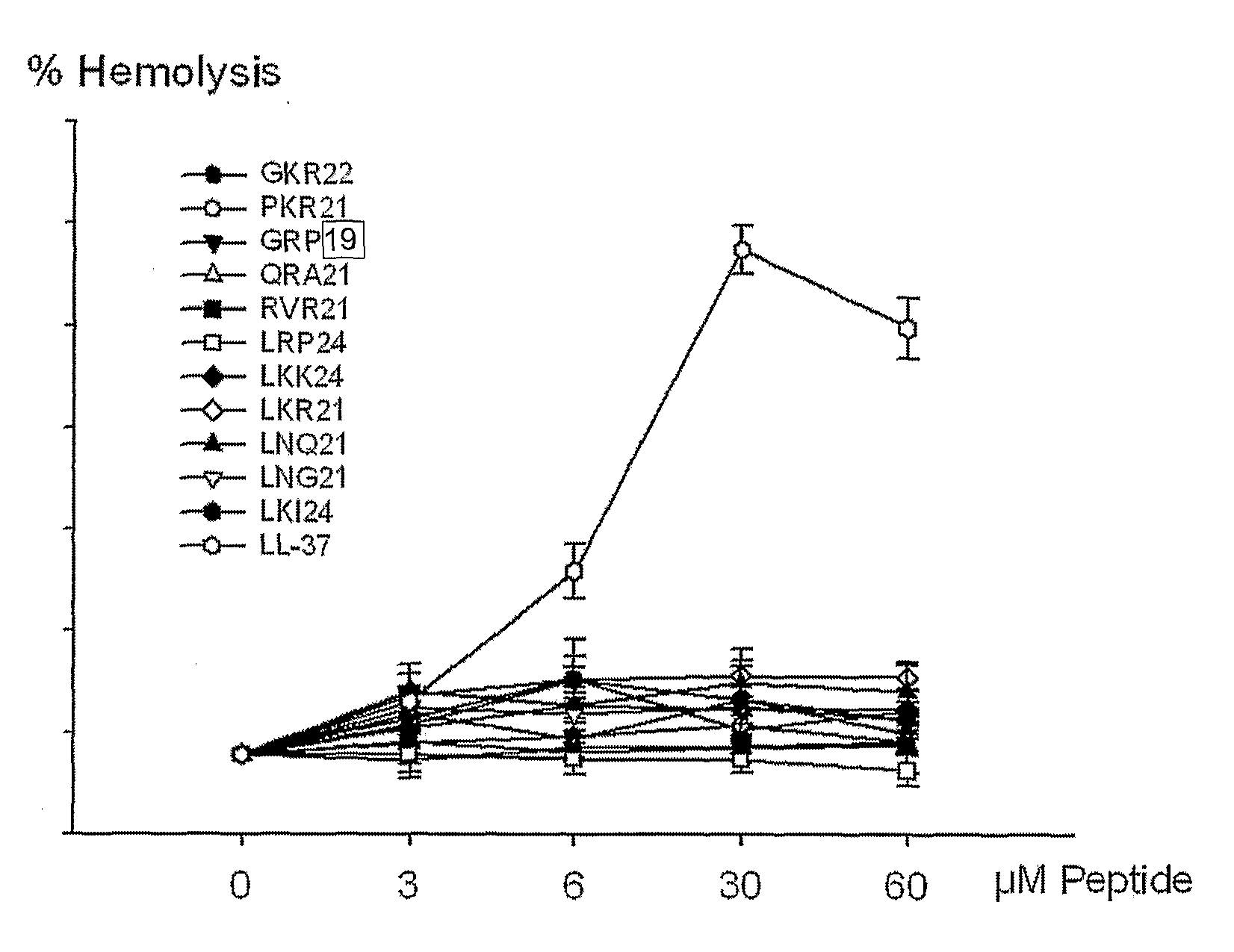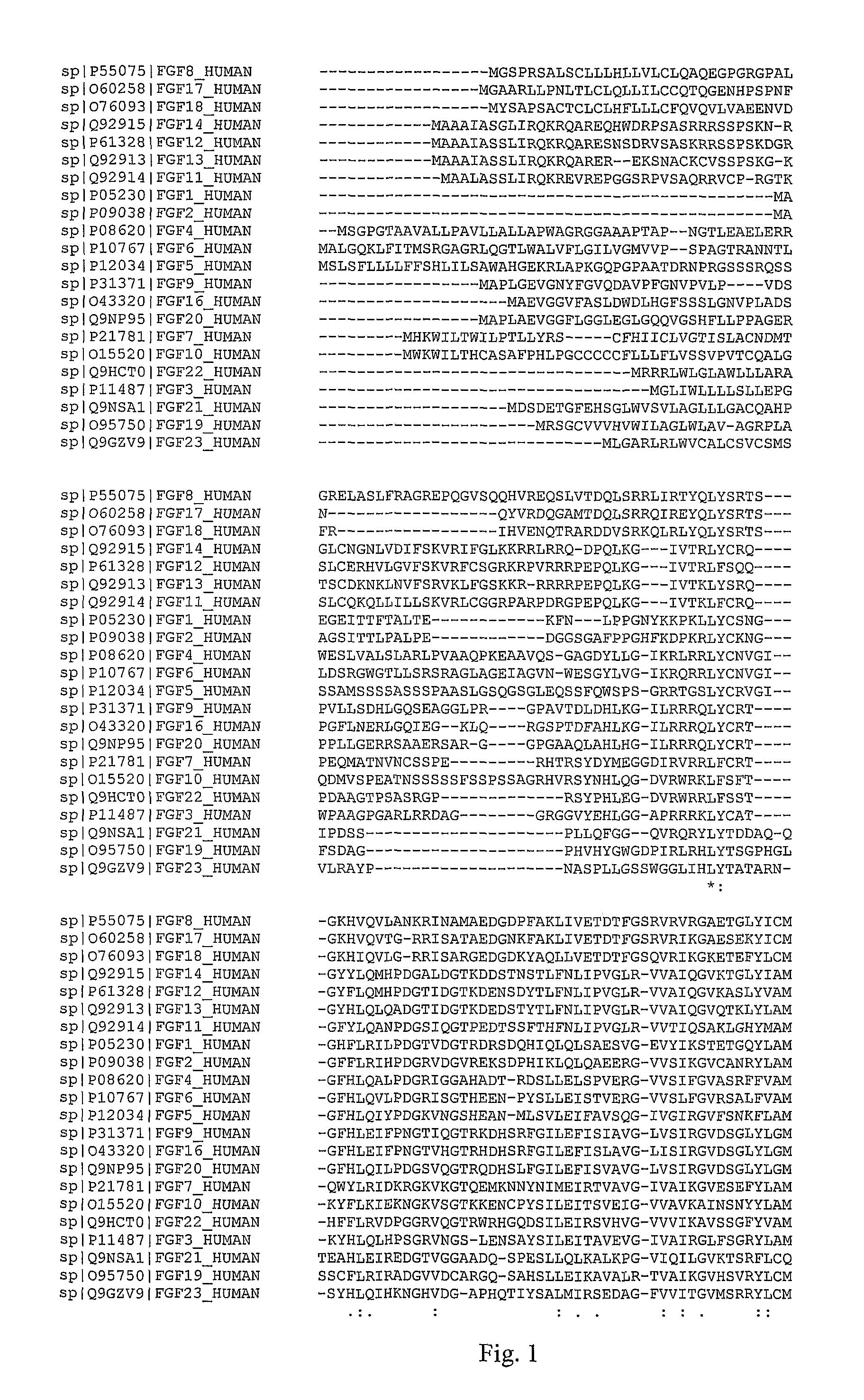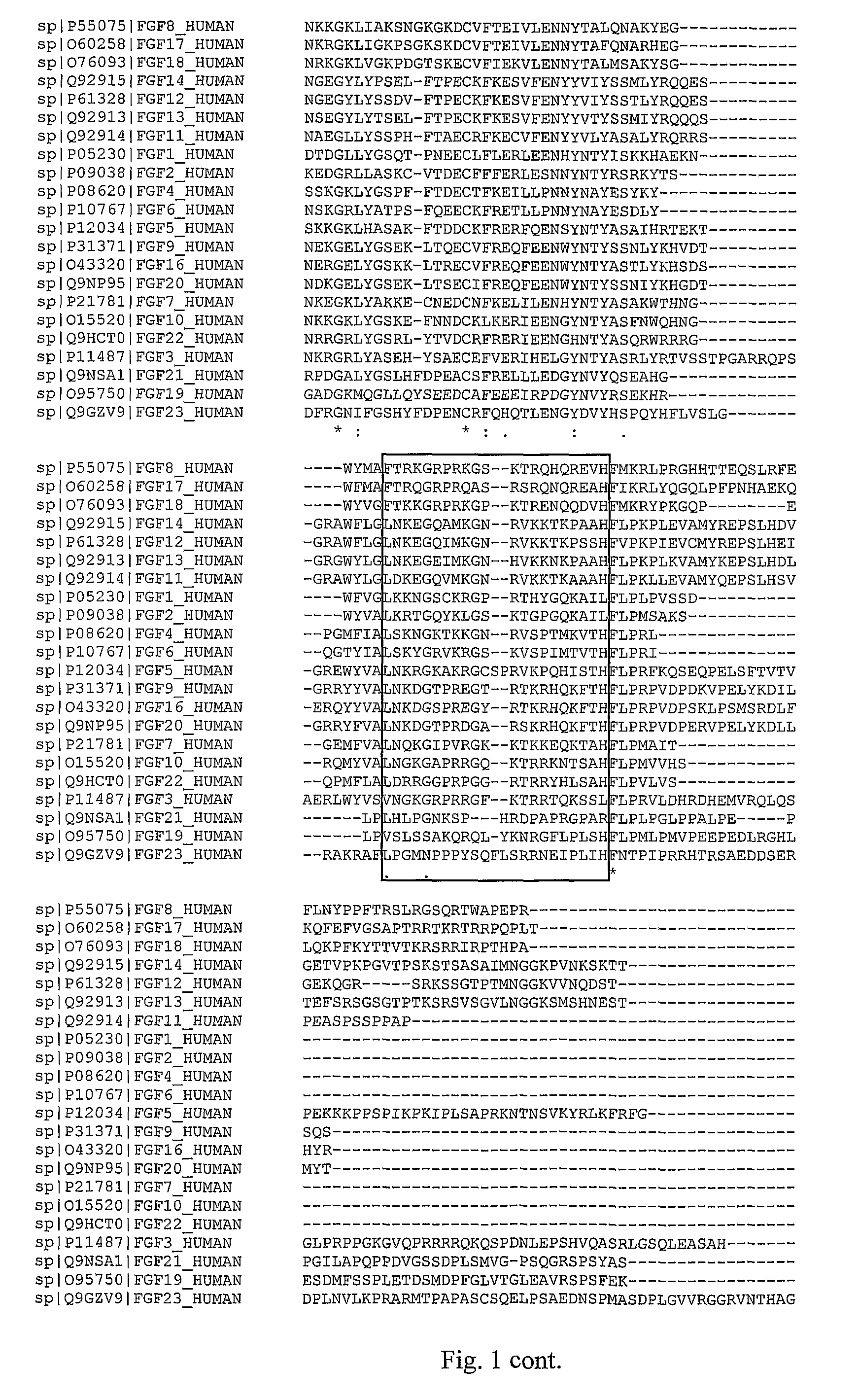Novel antimicrobial peptides and use thereof
a technology of antimicrobial peptides and peptides, which is applied in the direction of antibacterial agents, peptide/protein ingredients, drug compositions, etc., can solve the problems of localised or generalised acute infections, impaired skin barrier function, and vaccines are not always the best treatment options, so as to minimize allergy development
- Summary
- Abstract
- Description
- Claims
- Application Information
AI Technical Summary
Benefits of technology
Problems solved by technology
Method used
Image
Examples
example 1
[0129]Identification of the Peptide Structure of the Molecules Derived from Human Heparin-Binding Growth Factors (FGFs).
[0130]Fibroblast growth factors (FGFs) stimulate a variety of cellular functions by binding to cell surface FGF receptors (FGFRs) in the presence of heparin proteoglycans. Receptor activation gives rise to a signal transduction cascade that leads to gene activation and diverse biological responses. Both FGFs and FGFRs are expressed in defined spatial and temporal patterns, and they are involved in differentiation of both epithelial and neuronal cells. FGFs are potent mitogens for many cell types. FGFs are secreted factors originally identified based on their mitogenicity toward fibroblasts. They are small proteins for which several FGF crystal structures have been determined; all have 12 β strands in a β-trefoil fold (Szebenyi G. and Fallon J F., Int Rev Cytol., 1999, 185, 45-106).
[0131]Peptides derived from the region of heparin-binding growth factor 1 (FGF1, acce...
example 2
[0133]Identification of the Peptide Structure of the Molecules Derived from Human Heparin-Binding EGF-Like Growth Factor (HB-EGF) and Amphiregulin.
[0134]Human heparin-binding EGF-like growth factor (HB-EGF, accession code Q99075) may be involved in macrophage-mediated cellular proliferation. It is mitogenic for fibroblasts and smooth muscle but not endothelial cells. It is able to bind EGF receptors with higher affinity than EGF itself and is a far more potent mitogen for smooth muscle cells than EGF (Higashiyama S. et al., 1991, Science, 251, 936-939). It also acts as a diphtheria toxin receptor. A peptide corresponding to Gly92-lys113, GKR2, of HB-EGF shows antibacterial activity in vitro.
[0135]Human amphiregulin or colorectum cell-derived growth factor (AR, accession code P15514) is a bifunctional growth-modulating glycoprotein. It inhibits growth of several human carcinoma cells in culture and stimulates proliferation of human fibroblasts and certain other tumor cells (Shoyab M....
example 3
[0138]Identification of the Peptide Structure of the Molecules Derived from Human Platelet-Derived Growth Factors.
[0139]Platelet-derived growth factor (PDGF) is a potent mitogen for cells of mesenchymal origin, including smooth muscle cells and glial cells. In both mouse and human, the PDGF signalling network consists of four ligands, PDGF A-D, and two receptors, PDGFRalpha and PDGFRbeta. All PDGFs function as secreted, disulfide-linked homodimers, but only PDGF A and B can form functional heterodimers. PDGFRs also function as homo- and heterodimers. All known PDGFs have characteristic ‘PDGF domains’, which include eight conserved cysteines that are involved in inter- and intramolecular bonds. Alternate splicing of the A chain transcript can give rise to two different forms that differ only in their C-terminal extremity. They belong to the PDGF / VEGF growth factor family (Hamnink M and Donoghue D J., 1989, Biochim Biophys Acta, 989, 1-10).
[0140]Peptides corresponding to the carboxy t...
PUM
| Property | Measurement | Unit |
|---|---|---|
| Fraction | aaaaa | aaaaa |
| Fraction | aaaaa | aaaaa |
| Fraction | aaaaa | aaaaa |
Abstract
Description
Claims
Application Information
 Login to View More
Login to View More - R&D
- Intellectual Property
- Life Sciences
- Materials
- Tech Scout
- Unparalleled Data Quality
- Higher Quality Content
- 60% Fewer Hallucinations
Browse by: Latest US Patents, China's latest patents, Technical Efficacy Thesaurus, Application Domain, Technology Topic, Popular Technical Reports.
© 2025 PatSnap. All rights reserved.Legal|Privacy policy|Modern Slavery Act Transparency Statement|Sitemap|About US| Contact US: help@patsnap.com



